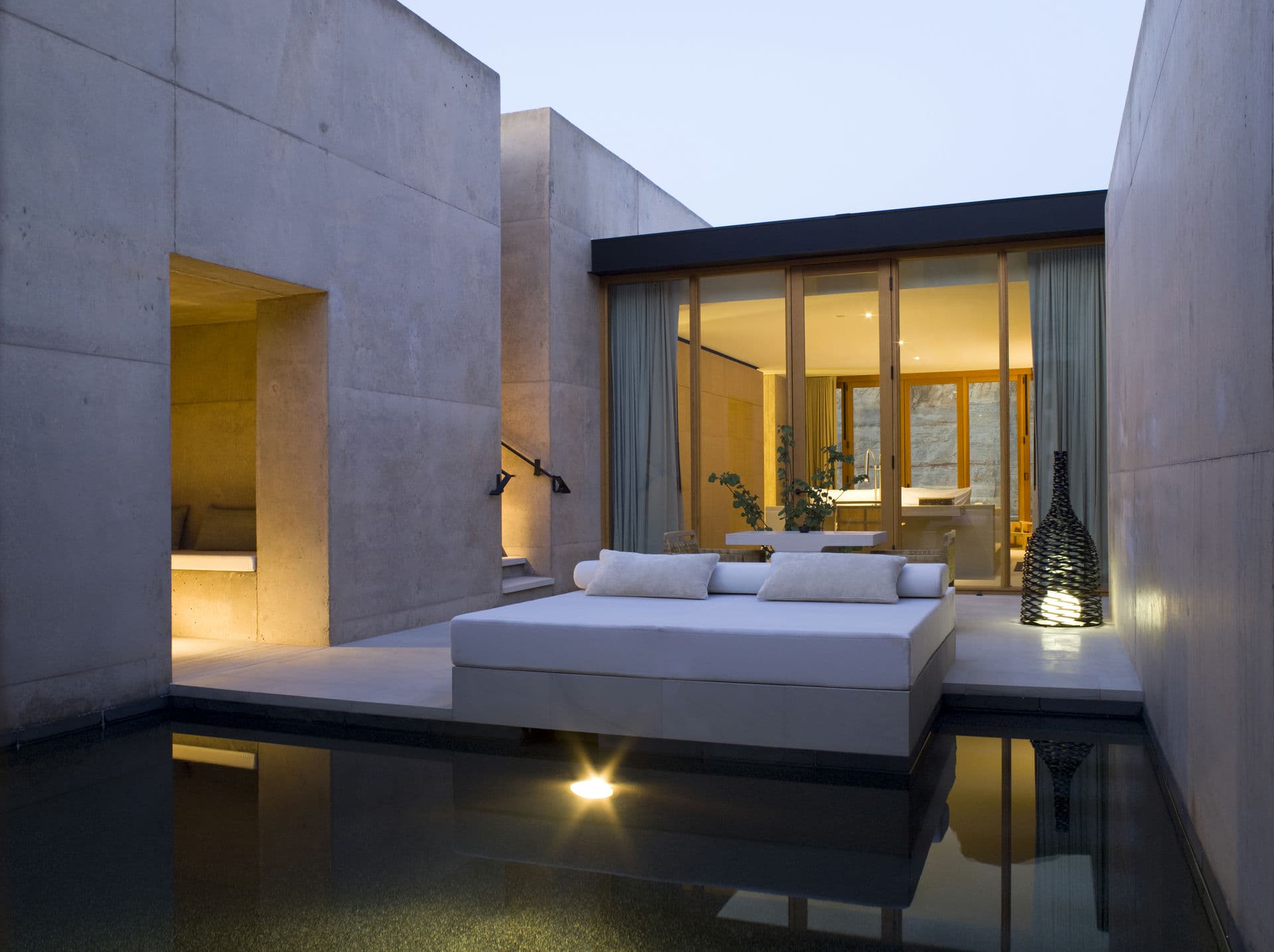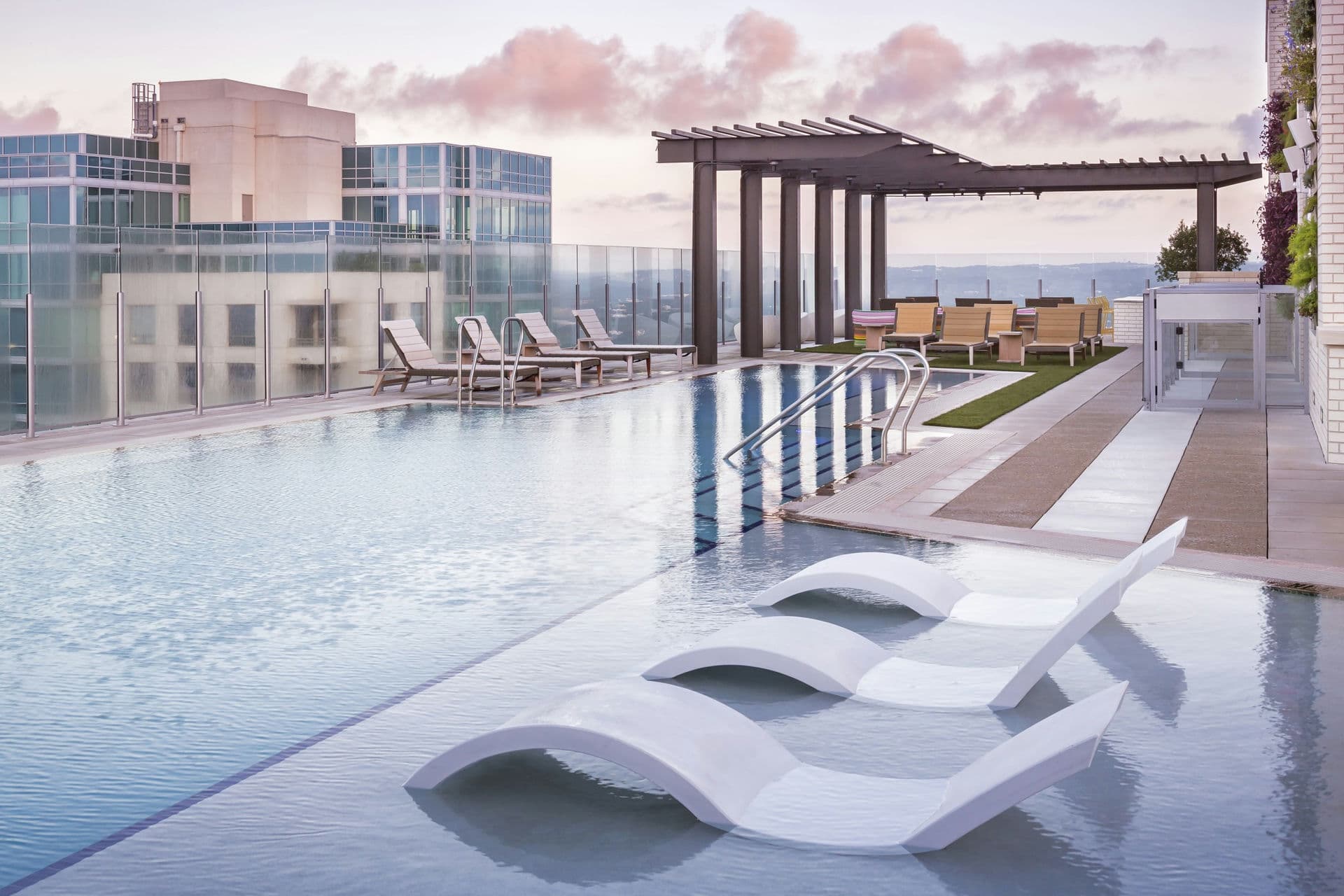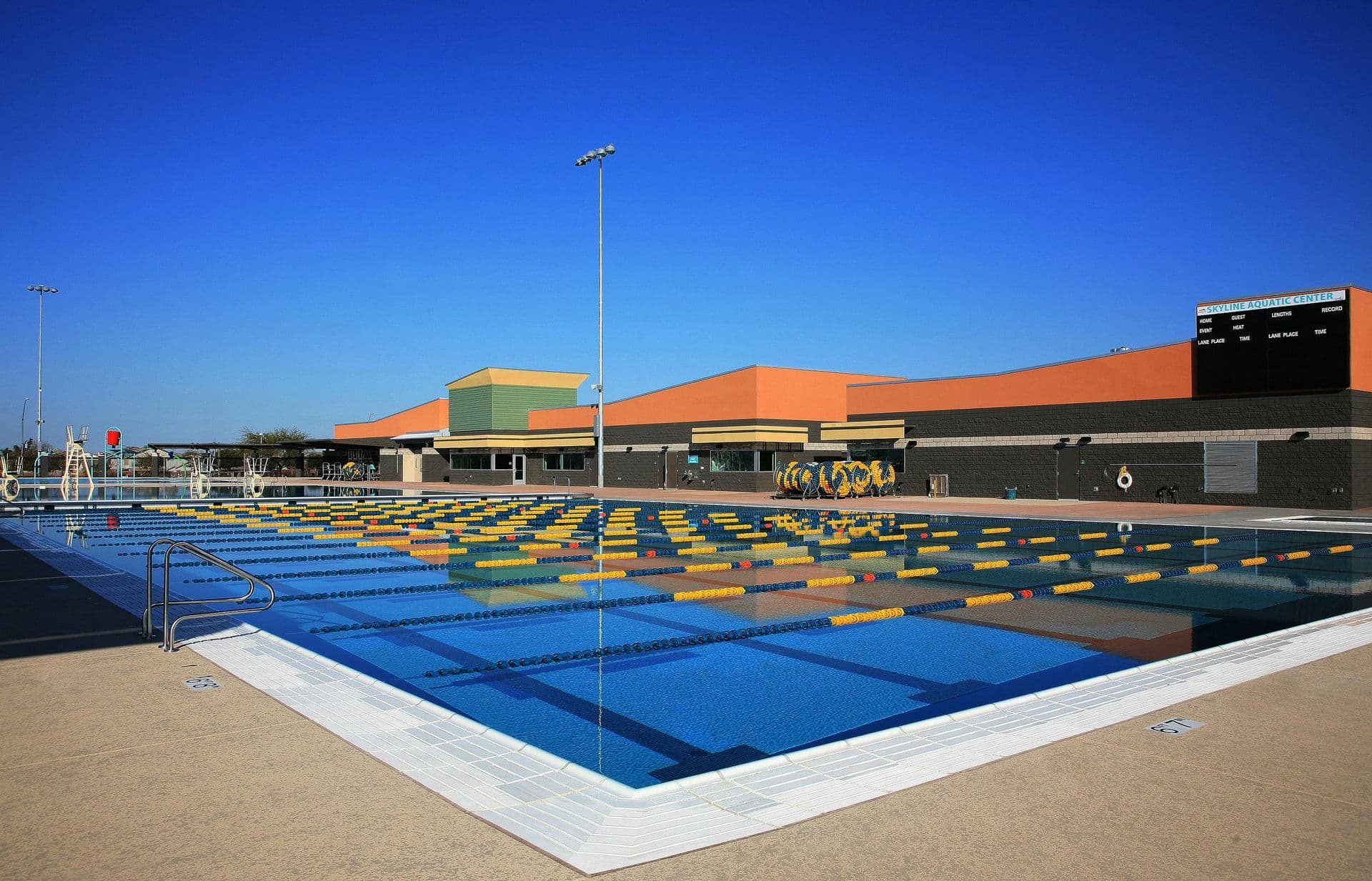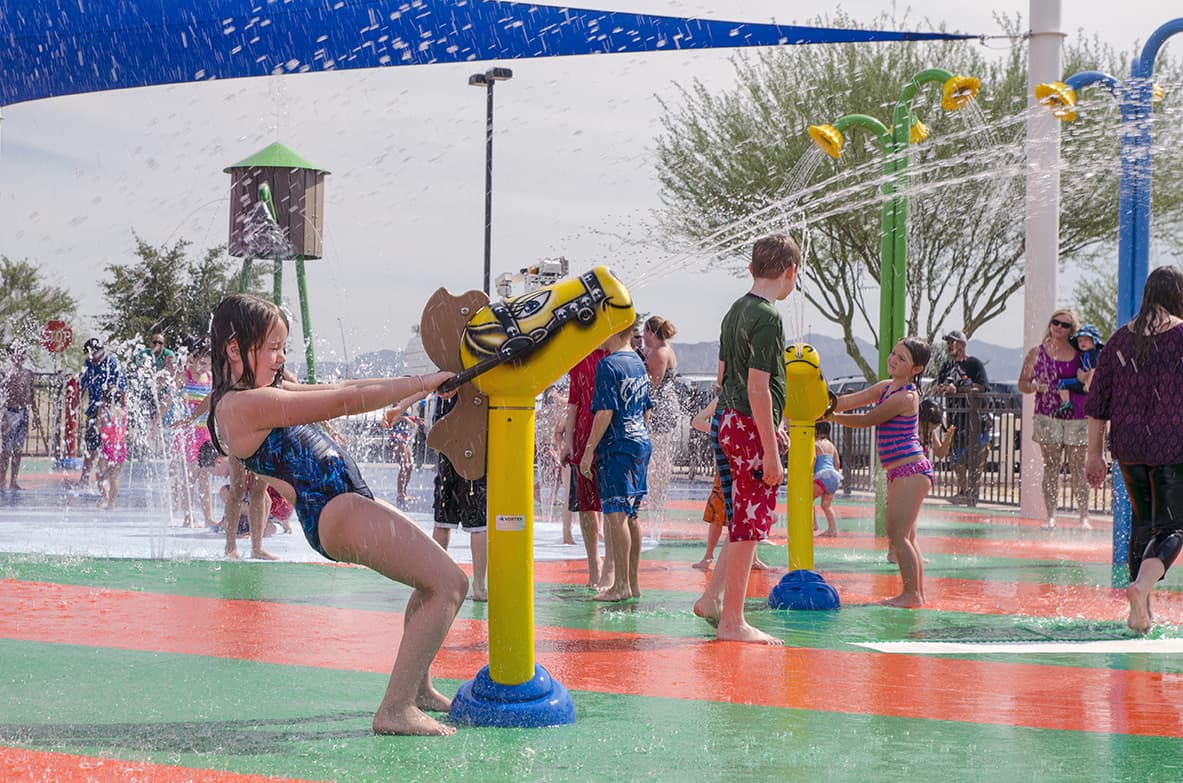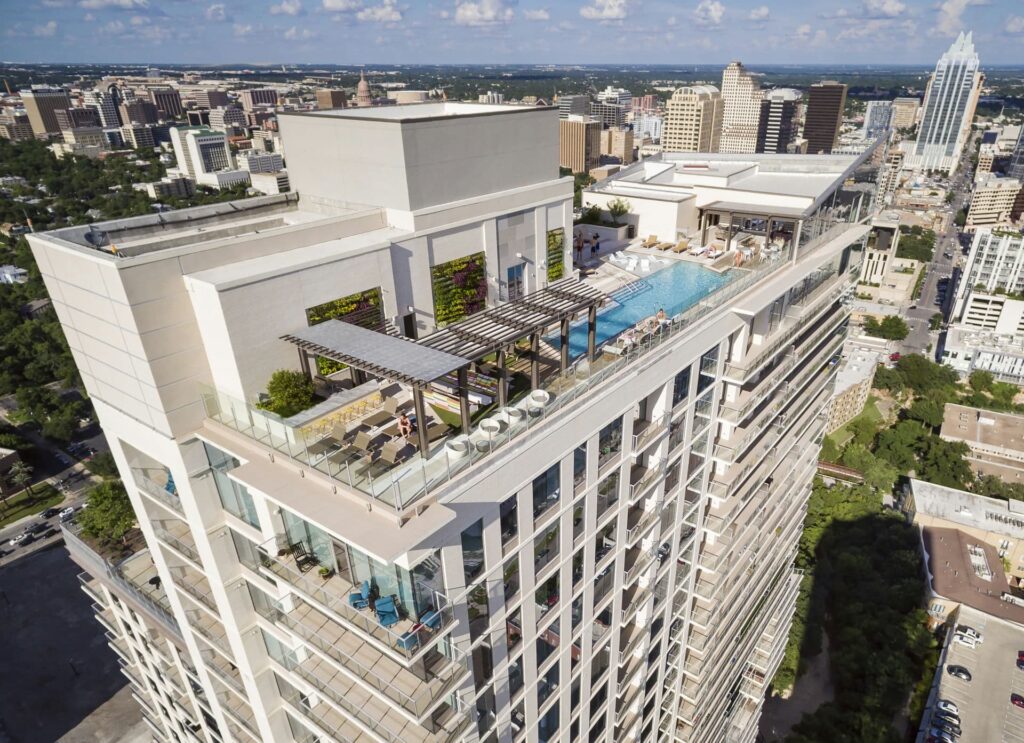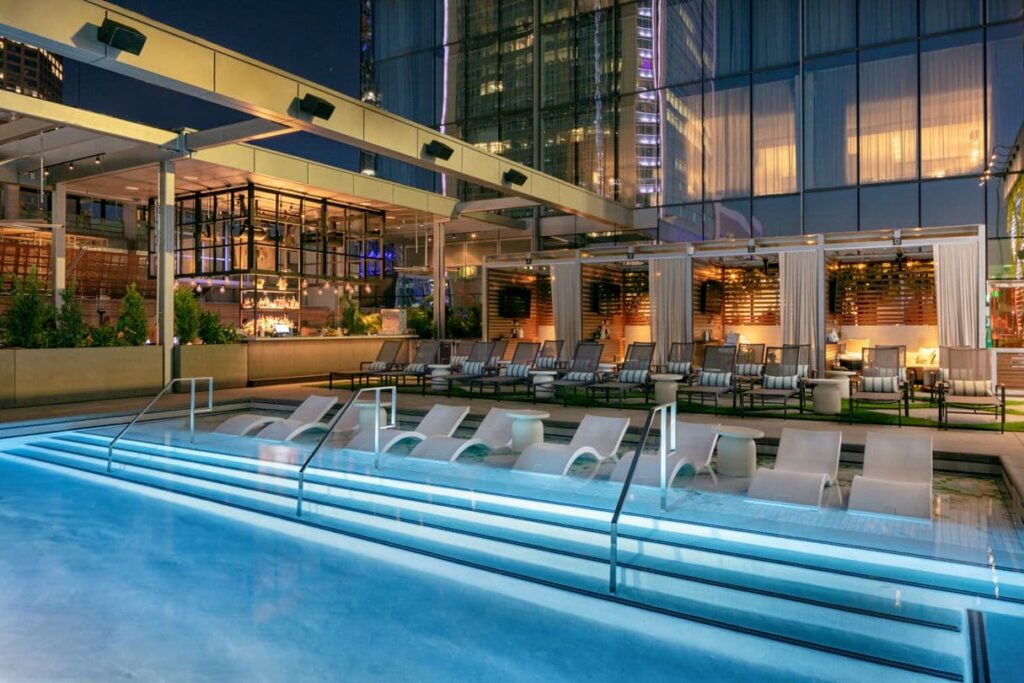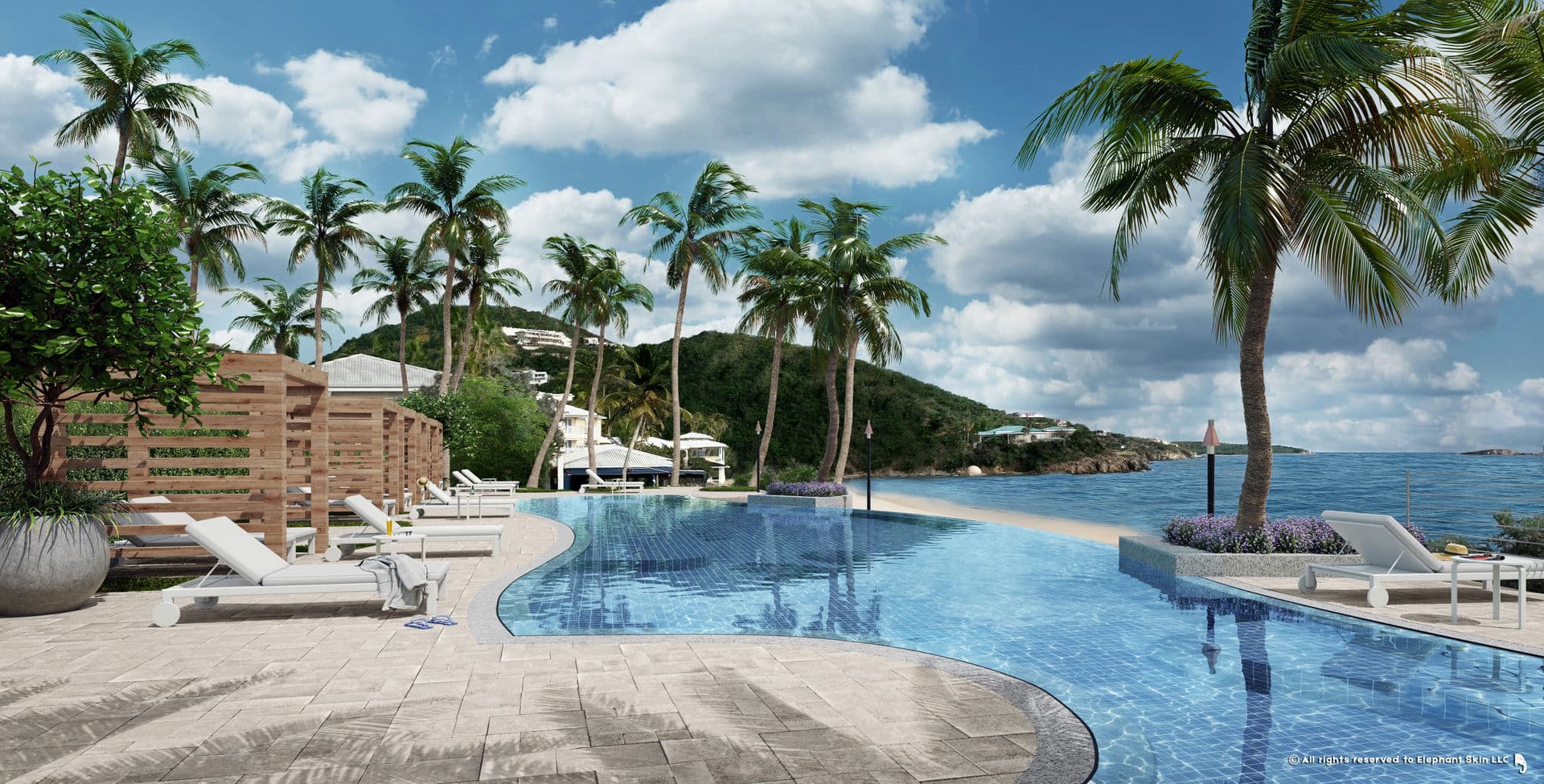
Design Resources
The Evolution of Resort Design Trends
In the pursuit of luxury, resort designs provide an intricate blend of art, science, and splendor. As a haven of relaxation, resorts have developed significantly over the years which we can pinpoint by the change in consumer preferences, architectural innovations, and environmental consciousness. Join us as we delve into the journey of trends and design in the ever-evolving landscape of the aquatic world.
Focusing On Sustainability
In years past, many resort designs prioritized extravagance, opulence, and a “more is definitely better” mentality. However, the travelers in our current decade are much more environmentally conscious than their predecessors, desiring escape from their ordinary life without compromising their views on the world. Those who specialize in resort design now work to incorporate sustainable practices and materials into their finished projects.
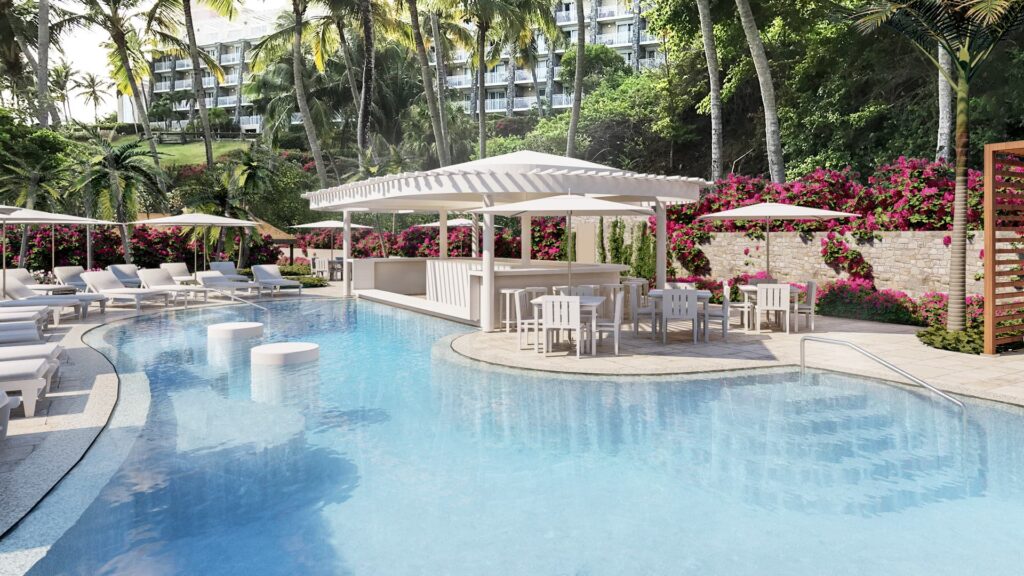
This includes features like energy-efficient lighting, renewable energy sources, eco-friendly building materials, and water conservation measures. Architects and contractors alike understand that balance between the design and the existing landscape are crucial for not only aesthetics but as an ethical responsibility.
Integrating with Nature
A large change in consumer behavior is how individuals are seeking resorts that blend together design with the natural environment and surroundings. This shift has allowed architects to craft designs that honor the landscape and natural elements already present.
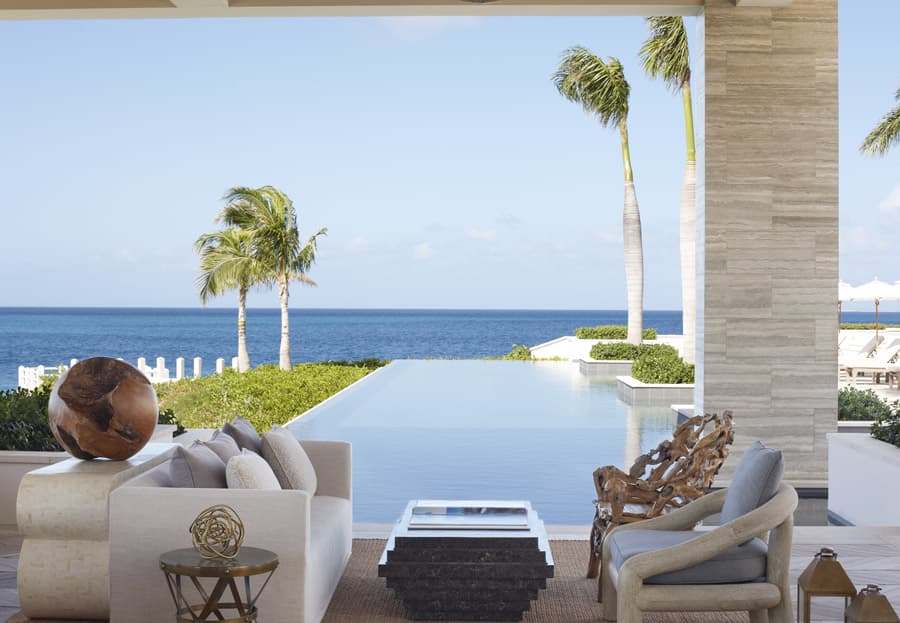
With this integration, spaces involve the use of open-air structures, locally sourced materials, and minimalistic design elements to let nature take the spotlight. Integrating layout with nature also includes considering the resort’s footprint on the environment and creating a design that lives in harmony and flows seamlessly rather than dominating the surrounding landscape.
Wellness and Spa Retreats
With wellness tourism on the rise, resorts are focusing on trends reflecting this shift in preferences. Architects and designers are prioritizing the integration of spa and wellness materials and facilities in resorts to create a peaceful sanctuary of rejuvenation and relaxation.
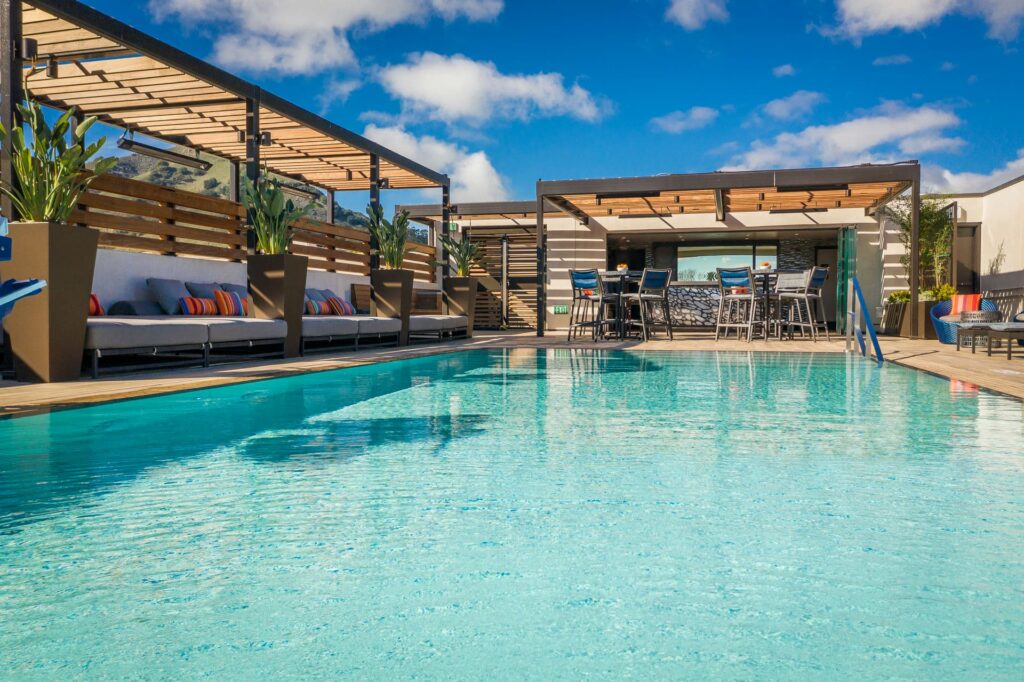
While resorts made strides in the past to incorporate these features, the present day tourist industry has held a heavy hand on this change. These spaces typically feature meditation pavilions, high-end spa facilities, and tranquil gardens or bodies of water. Resorts looking to incorporate more health and wellness may seek our architects with expertise in designing spaces that promote physical and mental health.
Personalized Experiences
Resorts are drifting away from their one-size-fits-all approach and wholeheartedly embracing personalization to create a unique user experience. Spaces to include personalized touches in resorts include room layout, private plunge pools, and in-room amenities.
And with dining, culture, and traditions, resorts have shifted their priorities once more. While focusing on a large dining facility for everyone to enjoy at once was pivotal for many resort owners, now designers are focusing on authentic encounters through cultural centers, outdoor gathering spaces, and more intimate dining areas.
Technological Advancements
An emerging contemporary trend is incorporating technology into multiple facets of a guest’s experience during their stay. Designers are now integrating small technology for convenience and security by including energy-efficient climate control systems in rooms, keyless entry, and automated lighting and entertainment systems.
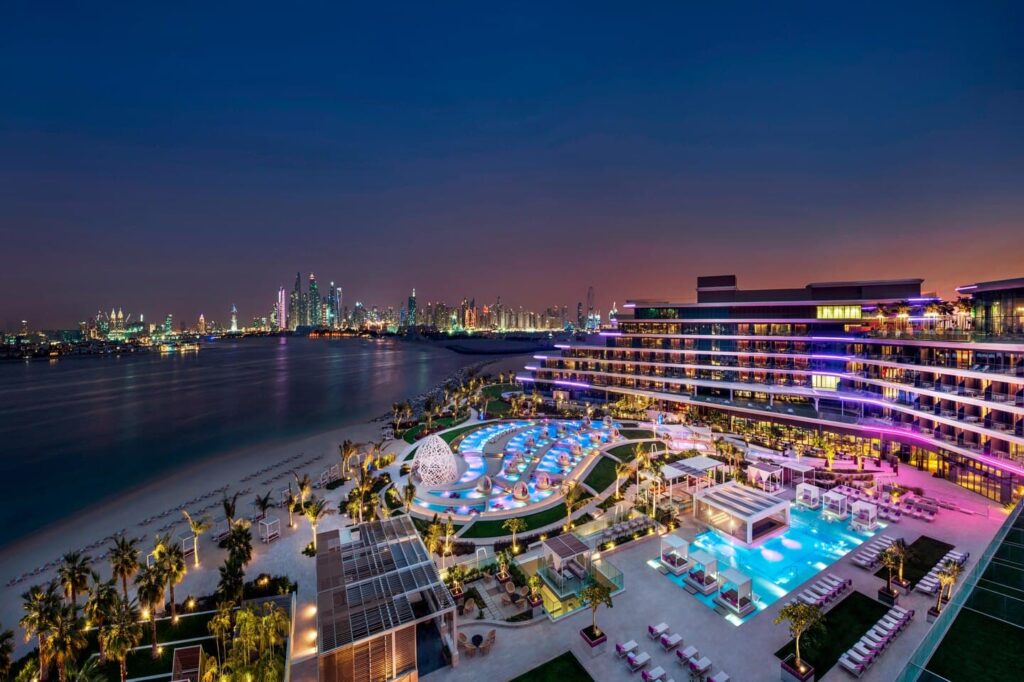
Some advanced designs may even incorporate sustainable technology including rainwater harvesting and solar power generation to reduce their environmental impact.
Summary
How resort design trends have changed over the years is directly correlated to the changing tastes of travelers and adventures. As the resort industry continues to change and grow, designers and architects will play a centralized role in shaping the future of where luxury meets consciousness and experiences.
Subscribe to our Newsletter
Subscribe to our newsletter to receive the latest insights.





